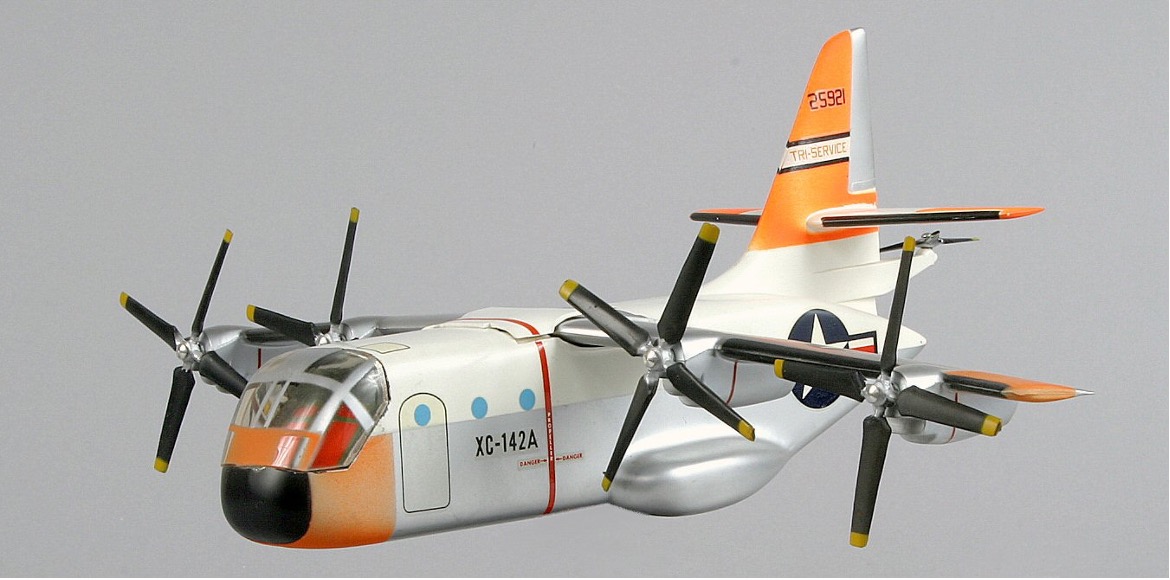U.S. Air Force Ling-Temco-Vought XC-142 Tilt-Wing

MODEL BY:
Ling-Temco-Vought
Model Scale:
1/72
MODEL ADDED:
11/21/1966
historical significance
First Albuquerque Visit: 1966
Additional Information:
The Ling-Temco-Vought (LTV) XC-142 is a tri-service tilt-wing experimental aircraft designed to investigate the operational suitability of vertical/short takeoff and landing (V/STOL) transports. The XC-142A first flew conventionally on September 29. 1964, and completed its first transitional flight on January 11, 1965 by taking off vertically, changing to forward flight, and finally landing vertically.
In 1959, the United States Army, Navy and Air Force began work on the development of a prototype V/STOL aircraft that could augment helicopters in transport-type missions. Specifically the services were interested in designs with longer range and higher speeds than existing helicopters in order to support operations over longer distances, or in the case of the United States Marine Corps, from further offshore. On January 27, 1961, a series of DOD actions resulted in an agreement where all of the military services would work on the Tri-Service Assault Transport Program under the purview of the Navy’s Bureau of Naval Weapons (BuWeps).
The basic design was fairly typical for a cargo aircraft, consisting of a large boxy fuselage with a tilted rear area featuring a loading ramp. The fuselage housed a high cargo area and had a boxy cockpit on the front for the crew of three, two pilots and a loadmaster. The wing was mounted above the fuselage and the tail “T” shaped to keep the rear area clear during loading. For V/STOL operations, the aircraft “converted” by tilting its wing to the vertical and for pitch control the aircraft featured a separate tail rotor, oriented horizontally to lift the tail. The wing could be rotated to 100 degrees, past vertical, in order to hover in a tailwind.
Having the ability to take-off vertical and landing, but once in the air to fly with higher forward speed during flight is the goal of every transport designer. The XC-142-A was designed and in 1966 proved the concept could be done. During development of the aircraft the service sponsors began to pull out of the program and the project eventually ended due to a lack of interest even though the plane successfully demonstrated its capabilities. The aircraft never proceeded beyond the prototype stage and only five of the XC-142A’s were built. The design proved the idea could be made into a viable aircraft. In time this was proved to be true with the Osprey V-22 flying today.
The Ling-Temco-Vought XC-142, Bu No. 25921, was given high altitude tests at Kirtland Air Force Base in Albuquerque, New Mexico, beginning on April 22, 1966. USN aviators Major G.E. Jones and Lt. Col. B. Odneal conducted the tests at Kirtland AFB.
A composite photo shows the different rotating wing angles of the XC-142 as it takes off and transitions to forward flight.
An original XC-142 aircraft can be seen at the Air Force Museum.
GALLERY:
SEARCH OUR DATABASE:
